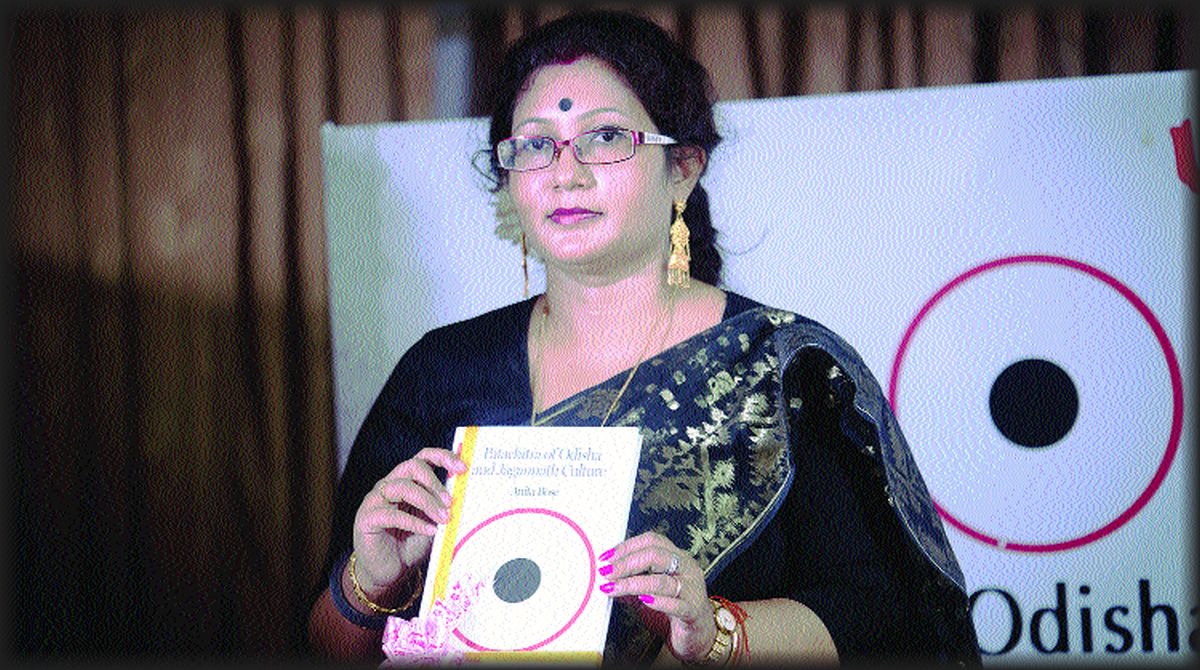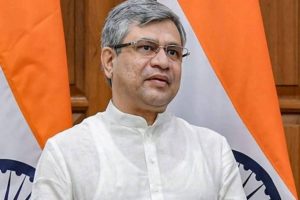Meet Anita Bose. She is an accomplished artist and painter who specialises in the sustenance and restoration of several ethnic arts and crafts of different Indian spaces with a focussed interest in the Patachitras of Odisha. Her fascinating book Patachitra of Odisha and Jagannath Culture in its English translation by her son Subhankar Bose, published by eminent publishers Gangchil was recently launched at the Ramakrishna Mission in Kolkata. Excerpts…
Q What led you to write this book and to choose a specialised form of art for yourself?
Advertisement
I have travelled widely across different parts of India and South East Asia in the course of my research and to learn about the varying colours contained in all native art forms. I have studied, in-depth, the influence of Indian art and Hinduism on Southeast Asian countries. From 2013, I have written widely on this subject in publications like Udbodhan, Bali Jyotika, Sala, etc in India and Bali. I am a volunteer guide at the National Museum of Bangkok where I live and also work as a freelance researcher on ancient Indian art and culture.
Q Do you consider yourself an artist or an author?
As an artist first and last because as an author also, I am expressing my personal knowledge and experience in different schools of ethnic art and craft. Art has been a passion even when I was a child. I would devote hours to train in music, painting and other disciplines related to art. I love different forms of art and have tried to attain mastery in the Madhubani school of painting, in Tanjore glass painting, ceramic work and so on. My research work covers the Patachitra of Raghuramput and their Artisans’ Life (2012), Puranas Pancham Veda (2013), and Ramayani Civilization and its Influence Outside India (2017).
Q Why this special focus on Odisha and on patachitra school of fine arts and crafts?
Anga, Banga and Kalinga (Odisha) are bonded geographically and culturally and define the Eastern boundaries of the Indian cultural cauldron. Within these boundaries lie the enigmatic essence, the core, the philosophy and the ideology of the divine — the Jagannatha culture. This is a reckoning force that seeks to promote peace and harmony while it also reconciles itself with the reality of Life’s turbulent nature.
The blessings of Lord Jagannatha have shaped the minds and inspired confidence among devotees since the beginning of time. The creation of the magnificent rathas or chariots of Lord Jagannatha has been created through intangible feelings of ecstasy his devotees feel for him. The masterfully crafted temples, the soulful music, the vibrant dances and colourful art works have also come about through his blessings to the artists and craftsmen who are his earnest devotees. Within this colourful world of creative art stands Patachitra in its glory though it remains low profile through the humility of its creators.
Q Art on different textures and on cloth is known across India. What led you to choose the Patachitra for your work?
You are right. The use of patas (cloth) is common in different parts of India such as the Madhubani in Bihar, the Pichauri painting of Rajasthan’s Nathdwara temple, the special kind of patas used by the artists in Majuli Char of Assam where the subjects were focussed on topics drawn from the Vaishnava cult. Bengal itself has several kinds of pata paintings such as the Choksudan Pata and the Kalighat pata. But nowhere is the ‘pata’ school of art as prolific and ever-changing and dynamic as it is in Odisha.
Q How and when did your interest develop in this special school of Odisha pata paintings?
When I visited Puri in March 2011, I first chanced upon the village of Raghurajpur which is around 11 kms from Puri. The art here is also known as the “Art of Raghurajpur.” I was selected to make a presentation on a discourse on the “Appreciation of Indian Art” held under the auspices of the Ramkrishna Mission, Gol Park and this led me to further research into this place, its artists and the art itself. I promised myself if I ever had the chance of visiting this village, I would learn of the art of patachitra directly from the artists who have been working in this field through generations.
Q And did you do that?
Yes, I learnt directly from Sishir Satpathi, the frontrunner of a new generation of patachitra artists who won the Lalit Kala Academy Award. I also had the good fortune of interacting with Sridhar Maharana and his pupil Deba Maharana at his residence. Sridhar Maharana has won the Presidential award. He told me a great deal about the highly revered Sri Jagannath Mahapatra who was the first artist from Raghurajpur to be bestowed the Sarvapalli Radhakrishnan National Award in 1965.
I also visited the Bhubaneswar State Museum which contains some ancient patachitras which originally were along the walls of the Birinchi Temple in Bagura district, Odisha. Each artist has his or her own artistic identity. Yet, when a group of people are trained in the same school of art, there is this beautiful ‘community’ feeling they share and this applies to all pata artists across Odisha.
Q How has the journey through the book been?
It has been a great learning and researching and exploring experience for me. I am also grateful to my son for translating it in English. The book is divided into 14 chapters, each elaborating on an extension of the Patachitra culture. I discovered that the narrative style of these paintings done in organic colours on the walls of temples, on cloth scrolls, on circular playing cards has its own specific rhythm. It seems as if a simplified form of the sculptures of Odisha has found expression in the arts of Raghurajpur and created an independent art form unto itself.











